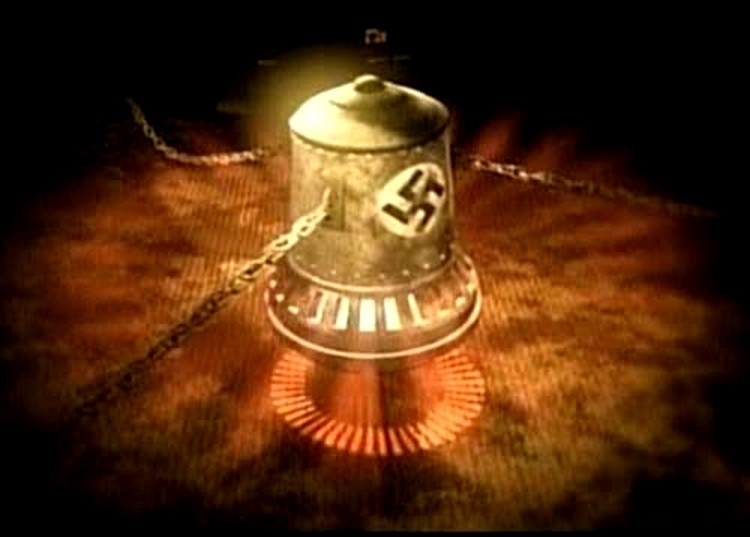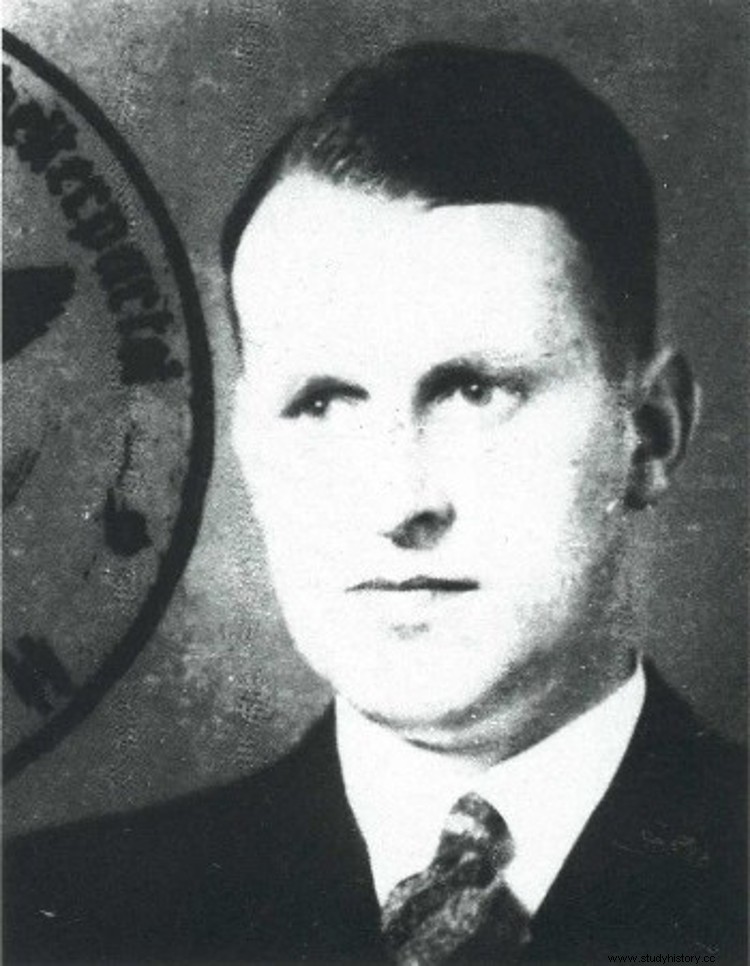Imagine that the Germans had developed a powerful secret weapon at the end of World War II. Another one to add to a long list but this time something completely different from the conventional, conceptually speaking, a system that would allow gravity to be canceled in their aircraft and even, according to some version, time travel. This invention is known by the name of Die Glocke (The Bell) and would be part of that legion of wunderwaffen , that is, miraculous weapons, which the Nazis are supposed to have developed in the last stages of the war to turn its course. I speak conditionally because there is no proof, not of its existence but even of a real work in that sense.
The concept of wanderwaffen it responded more to the intense activity of Goebbels' Ministry of Propaganda than to reality. Obviously, there were projects; many, in fact, and across the board:jet planes like the Messerschmitt Me 262, the Heinkel He 280 or the Focke-Wulf Ta 183; Colossal sized tanks like the Landkreuzer P 1500 Monster or minuscule like the Kugelpanzer; electric submarines, such as the XXI series, and capable of launching ballistic missiles; helicopters; guided rockets and missiles; a sonic cannon; chemical weapons such as sarin gas or bacteriological weapons such as botulinum toxin; and of course, the attempt to get an atomic bomb, among other things.
However, most of these inventions did not go beyond the theoretical phase and few prototypes were ever manufactured, although some of the projects, including their authors, were taken by the Americans to continue the work in their country on the known asOperation Paperclip . The rest only served to maintain morale among the population with the promise of a last-minute secret weapon that Hitler kept up his sleeve and that would allow him to achieve final victory. As we know, things were very different.

Now, the possibility that there was an occult device completely revolutionary for its time and quite rare, if possible, is something that has excited the imagination of many writers. Some like Jan Van Helsing, Norbert-Jürgen Ratthofer and Vladimir Terziski had no complexes when mixing reality and fiction in a totum revolutum which included weapons design, the Nazi fondness for esotericism, secret societies with secure historicity such as Thule or more debatable (in the case of Vril) and the UFO fashion that began to spread in the 1950s. There are countless publications -and even movies- that are in this line, some jokingly but others seriously.
Thus, for example, they attributed to the Third Reich the invention of a kind of flying saucer, opening the door to a legion of imitators that they found in the followers of those worlds (the Nazi and the fan of esoteric subjects). In the year 2000 Igor Witkowski, a Polish journalist specialized in military technology and history of the Second World War, editor of magazines on both subjects, published a book entitled Prawda o Wunderwaffe , which in his own words was the result of «fifteen years of work in archives, in several countries» .
The work achieved some success because another journalist and writer in the same field, the British Nick Cook, echoed it and popularized it by citing it in his own book The Hunt for Zero Point (The hunt for Point Zero), published the following year and in which he spoke of the work of Nazi scientists in the field of antigravity propulsion. Thanks to review by Cook, Prawda or Wunderwaffe was translated into English in 2003 as The truth about the Wunderwaffe (The truth about the Wunderwaffe; later there was an expanded edition with the title New truth about the Wunderwaffe ) and began to appear in occult bibliographies or those related to Nazism and its secret arms industry.

One of the most surprising chapters of Witkowski's work was devoted to a project named Die Glocke (The Bell), which he would have discovered in 1997 when he had access, through a contact in the Polish intelligence service, to the transcripts of the interrogation of an SS officer, Jakob Sporrenberg. In them, the German narrated the details of an experiment carried out in a hidden base called Der Riese , which was in the Owl Mountains, near the Wenceslaus mine, in the Sudetenland (close to the Czech border).

Der Riese it really existed and consisted of underground facilities that began to be built from 1943 from the Książ castle, with tunnels, railways, telephone lines, etc. The workforce employed was about thirteen thousand prisoners, transferred for the most part from Auschwitz, and according to the testimony of Albert Speer, the architect of the regime, the budget for the works amounted to one hundred and fifty million marks; not in vain Der Riese means The Giant and its enormous dimensions prevented it from being completed, as 1945 fell upon it and the Allies came closer and closer.
The fact is that Witkowski places there a strange bell-shaped structure approximately four and a half meters high by two and a half meters wide, made of "a hard and heavy metal" ceramic-coated, containing two rotating cylinders filled with a violet-colored fluid with a consistency similar to that of mercury, identified as Xerum 525 and whose reserves were kept in a one-meter-long lead capsule. Sporrenberg added that there were other complementary liquids such as leichtmetall (which means light metal in German) and peroxides of thorium and beryllium, elements used as fuel in nuclear reactors.
The Polish journalist explained that the objective of Die Glocke was to generate antigravity propulsion -that is why it was attached to the ground by thick chains- and that when it was activated it could cause deadly effects on living beings that were within a radius of one hundred and fifty to two hundred meters:freezing of the blood in the circulatory system, decomposition of organic tissues... Furthermore, five of the seven members of the research team -led by physicist Walther Gerlach- perished during the tests, although it was not clear how. Witkowski tells in his book that a French scientist named Elie Cartan had already taken important steps in this field after the First World War, although the antigravity he generated was too weak to have a practical application.

The cylinders of La Campana would rotate in their respective opposite directions, generating a vortex that would cause a separation of the magnetic fields of the superconductors used. The project, promoted by the SS-Führungshauptamt, was developed between November 1941 and April 1945, and since the description comes from a military man instead of a scientist, things are quite confusing. Because, in addition to the fact that before the imminent arrival of the enemy Sporrenberg would have received the order to execute all those related to the project, it turns out that the Polish secret agent who provided the documents to the journalist forbade him to make copies, having to limit himself to taking notes.

In other words, there is no material or documentary evidence. Witkowski himself says that La Campana was taken out of Germany and sent to one of those South American countries that took in escaped Nazi war criminals. Nick Cook adds that he did not go to South America but to North America, to be exact, after an agreement reached between the Allies and the SS general who was in charge, Hans Kammler. This was also an authentic character; he was an engineer and directed the construction of some of the special weapons mentioned above, such as the V-2 or the Messerschmitt Me 262 jet planes, giving rise to the circumstance that at the end of the conflict he disappeared without a trace.
Such an accumulation of inaccuracies only calls into question the whole matter. The most skeptical, generally linked to the academic world of technology, physics and engineering, dismiss it as fiction, a mere pastiche of stories about the always fascinating environment of Nazism that were already circulating since the publication in 1960 of The return of the sorcerers , by Louis Pauwels and Jacques Bergier, the book that opened Pandora's Box of esotericism, parapsychology, pre-human civilizations and Nazi occultism. Others, with a certain voluntarism, believe that perhaps Die Glocke could have existed but due to its shape it would be nothing more than a cooling tower.
gave the same There was a gold mine that a legion of authors were not willing to give up and some gave a twist to Witkowski's "scientific" approach to fully enter the delirium. In that, Henry Stevens would take the cake, a guy whose bibliography includes titles like Hitler's flying saucers. A guide to german flying discs of the Second World War and that in another of his books, Hitler's suppressed and still-secret weapons, science and technology , published in 2007, has no qualms about saying that in 1961 the German physicist Otto Cerny had unveiled a device very similar to Die Glocke with which you could travel in time.
